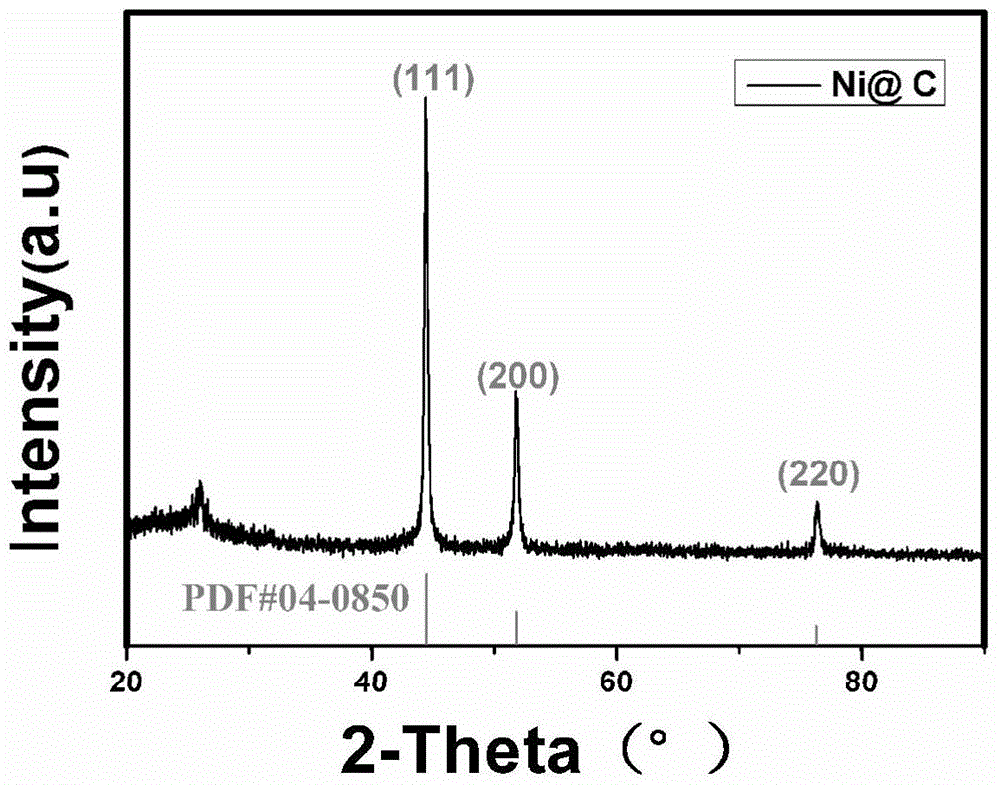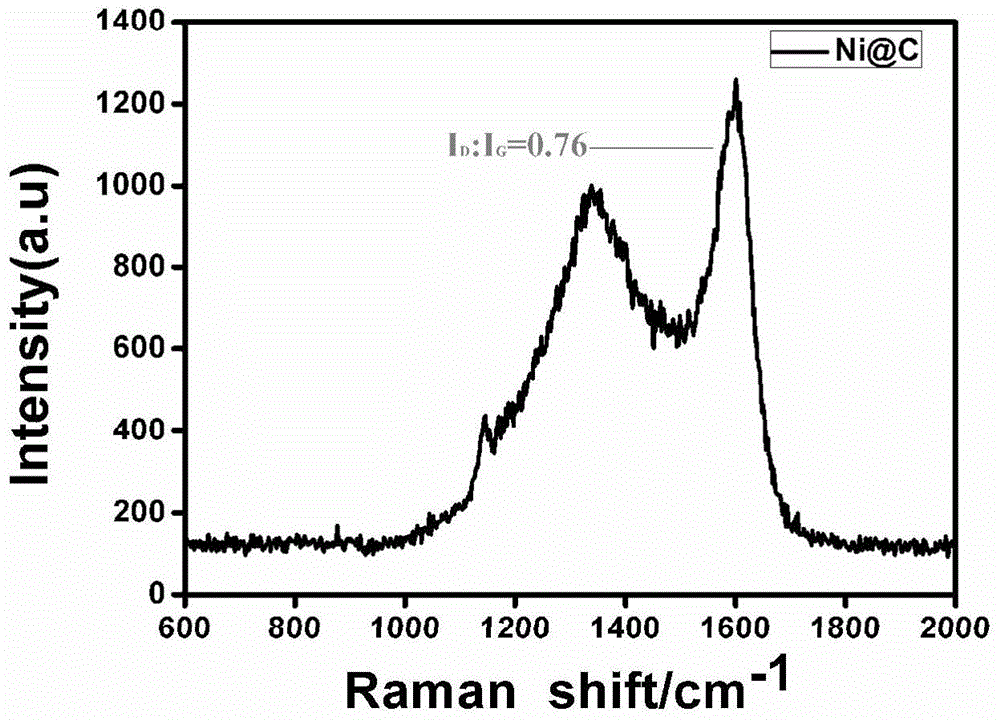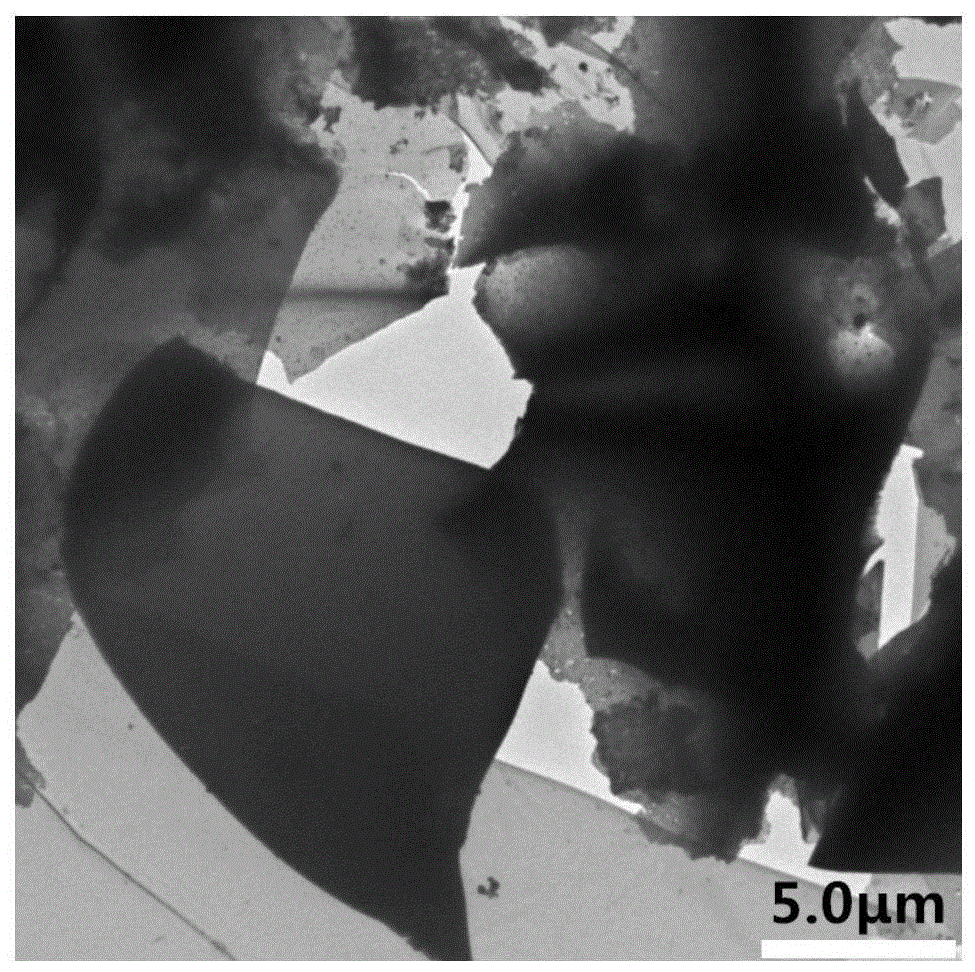Embedded nanometer metal-loaded carbon nanosheet lithium-ion battery negative electrode material and its preparation method and application
A lithium-ion battery and nano-metal technology, applied in the preparation of highly graphitized carbon nano-sheets, embedded nano-metal-loaded carbon nano-sheet lithium-ion battery anode materials, and the application field of lithium-ion battery anode materials, can solve the problem of nickel nano-sheets The particle size is large, the capacity drops a lot, and the lithium battery performance is not very good, etc., to achieve the effect of large specific surface area, abundant active sites, and uniform size
- Summary
- Abstract
- Description
- Claims
- Application Information
AI Technical Summary
Problems solved by technology
Method used
Image
Examples
Embodiment 1
[0041] A preparation method of an embedded nano-nickel loaded carbon nanosheet lithium-ion battery negative electrode material, comprising the following steps:
[0042] (1) Precursor preparation: with glucose as carbon source, nickel nitrate as metal source, and inert salt sodium chloride as template and dispersant, weigh 0.6g Ni(NO 3 ) 2 ·6H 2 O, 2.0g glucose and 5g NaCl were put into a mortar and ground for 30min, then added 7mL distilled water, stirred for 10min to make Ni(NO 3 ) 2 Dissolved with glucose, put the mixture in an oven at 40°C, and then put it into a tube furnace.
[0043] (2) Precursor pyrolysis treatment: The prepared precursor samples are evenly spread on the bottom of the corundum ark, the ark is placed in the constant temperature zone of the tube furnace, and the nitrogen gas is passed for 30 minutes to discharge the air in the tube furnace, and the nitrogen gas is continued , under nitrogen atmosphere, at 5°C.min -1 Carry out temperature programming ...
Embodiment 2
[0046] Similar to Example 1, the difference is that the preparation method of the precursor in step (1) of this example is as follows: glucose is used as the carbon source, nickel nitrate is used as the metal source, and the inert salt sodium chloride is used as the template and dispersant, and the 0.6g Ni(NO 3 ) 2 ·6H 2 O, 2.0g glucose and 7g NaCl were put into a mortar and ground for 30min, then added 7mL distilled water, stirred for 10min to make Ni(NO 3 ) 2 Dissolved with glucose, put the mixture in an oven at 40°C, and then put it into a tube furnace.
Embodiment 3
[0048] Similar to Example 1, the difference lies in the step (1) precursor preparation method of this example, specifically: glucose is used as the carbon source, nickel nitrate is used as the metal source, and the inert salt sodium chloride is used as the template and dispersant, called Take 0.6g Ni(NO 3 ) 2 ·6H 2 O, 2.0g glucose and 10g NaCl were put into a mortar and ground for 30min, then added 7mL distilled water, stirred for 10min to make Ni(NO 3 ) 2 Dissolved with glucose, put the mixture in an oven at 40°C, and then put it into a tube furnace.
PUM
| Property | Measurement | Unit |
|---|---|---|
| thickness | aaaaa | aaaaa |
Abstract
Description
Claims
Application Information
 Login to View More
Login to View More - R&D Engineer
- R&D Manager
- IP Professional
- Industry Leading Data Capabilities
- Powerful AI technology
- Patent DNA Extraction
Browse by: Latest US Patents, China's latest patents, Technical Efficacy Thesaurus, Application Domain, Technology Topic, Popular Technical Reports.
© 2024 PatSnap. All rights reserved.Legal|Privacy policy|Modern Slavery Act Transparency Statement|Sitemap|About US| Contact US: help@patsnap.com










